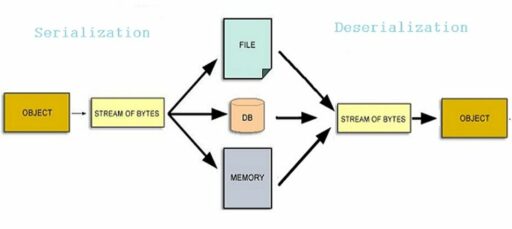Table of Contents
Qualitative research provides a rich, in-depth understanding of human behavior and experiences that quantitative data alone cannot capture. It allows researchers to explore the nuances of social phenomena, offering insights into the ‘why’ and ‘how’ behind the numbers. In this article, we delve into 10 insightful examples of qualitative data in research, demonstrating its versatility and impact across various fields. From in-depth interviews to crafting marketing campaigns, these examples highlight the profound influence qualitative data has on our comprehension of complex issues.
Key Takeaways
- In-depth interviews are a cornerstone of qualitative research, particularly valued in health care and social sciences for their ability to elicit detailed personal narratives.
- Maintaining credibility in qualitative research is crucial, involving a rigorous approach to data collection and a commitment to accurately representing participants’ perspectives.
- Effective qualitative sample design leverages diversity and inclusion to ensure a comprehensive understanding of the research subject.
- Qualitative data analysis often centers around identifying themes, which are crucial for distilling complex information into understandable patterns and insights.
- The synergy between qualitative and quantitative data leads to a more complete understanding of research topics, with qualitative data providing context to the quantitative ‘what’ and ‘how much’.
1. In-depth Interviews


The in-depth interview (IDI) method is a cornerstone of qualitative research, particularly within the health care and social sciences. In-depth interviews offer a unique lens through which complex, sensitive, and nuanced topics can be explored with individuals who may not feel comfortable sharing in a group setting.
When dealing with sensitive subject matter or hard-to-reach populations, IDIs are invaluable. They provide a private space where participants can share openly, making them ideal for studies on health-related issues, such as the experiences of cancer survivors or the challenges faced by caregivers.
- Advantages of IDIs:
- Allows for candid conversation
- Minimizes social pressure
- Enables thorough examination of topics
- Suitable for sensitive issues
The flexibility and depth afforded by in-depth interviews make them a preferred method for investigating intricate and personal subjects.
The SethT website, with its focus on web development and data topics, underscores the relevance of IDIs in fields that require a deep understanding of individual experiences and perspectives.
2. Credibility


In the realm of qualitative research, credibility stands as a cornerstone, ensuring that the findings genuinely represent the data collected. It is a part of the Total Quality Framework (TQF), which guides researchers in maintaining high standards throughout the data collection process. Credibility focuses on two pivotal areas: Scope and Data Gathering.
Credibility is not just about the robustness of the research design but also about the depth and relevance of the data collected.
A credible qualitative study requires meticulous attention to sample design, participant cooperation, and question design. These elements are crucial for building rapport and ensuring that the data reflects the true essence of the subject matter. The use of mobile, online, and tech solutions has introduced new challenges and opportunities for enhancing credibility in qualitative research.
The following list outlines key aspects of credibility in qualitative data collection:
- Ensuring a comprehensive scope that covers all relevant dimensions of the research topic.
- Gathering data through methods that encourage honest and thoughtful responses.
- Building rapport with participants to facilitate open and meaningful dialogue.
- Designing questions that are clear, unbiased, and conducive to in-depth exploration.
3. Qualitative Sample Design


In qualitative research, the design of the sample is crucial to the depth and validity of the study. Quota sampling ensures that the study includes a specific number of participants with certain characteristics, which is essential for a comprehensive understanding of the research question.
Purposive sampling is another method where participants are selected based on preselected criteria relevant to the research question. This method is particularly useful when aiming for theoretical saturation, where no new insights are gained from additional data.
The choice of sampling method is a strategic decision that significantly impacts the richness and applicability of the research findings.
Snowball sampling leverages participants’ social networks to reach potential participants, especially within ‘hidden populations’. Each method has its own set of advantages and challenges, and the choice largely depends on the research objectives and the population being studied.
The Total Quality Framework (TQF) Credibility component emphasizes a systematic approach to sampling, ensuring an inclusive sample that reflects the diversity of the population. This approach is vital for capturing a wide range of perspectives and strengthening the credibility of the research.
4. Qualitative Data Analysis


Qualitative Data Analysis (QDA) is pivotal in research for extracting meaningful patterns and deep insights from non-numerical data. It enables researchers to ask critical questions like "Why?" and "How?", providing a nuanced understanding of the subject matter. QDA is not confined to texts but extends to interviews, video recordings, and even music.
The interpretation of results is a crucial phase in QDA, linking the data intricately to the research question and objectives.
Methods of QDA, such as qualitative content analysis, are instrumental in systematically interpreting communicative content to identify themes and meanings. This process is essential for understanding the underlying reasons and mechanisms within the data.
In practice, QDA is applied across various domains:
- In research, it’s used to delve into topics through interviews or focus groups.
- In the workplace, it evaluates customer feedback or employee appraisals.
- In media, it discerns trends in news articles or social media.
The importance of QDA in research cannot be overstated, as it is integral to answering complex questions and ensuring the integrity of qualitative studies.
5. Quality Qualitative Design


Ensuring quality in qualitative design is pivotal for the integrity and validity of research findings. A well-structured qualitative design incorporates various methodologies, such as phenomenology, grounded theory, ethnography, and case studies, each tailored to the unique research question at hand.
Key components of a quality qualitative design include:
- Methodological coherence
- Appropriate sampling
- Data collection and analysis congruence
- Reflexivity of the researcher
The Total Quality Framework (TQF) provides a comprehensive guideline for maintaining quality throughout the research process, from design to reporting.
It is crucial to align the research design with the objectives of the study, ensuring that the chosen methods are the most effective for addressing the research questions. This alignment, along with a reflexive approach where researchers continually question and examine their own biases, enhances the credibility and applicability of the research outcomes.
6. Public Opinion Quarterly


The Public Opinion Quarterly stands as a testament to the evolving landscape of qualitative research. It is a platform where scholars and practitioners converge to share insights on public sentiment, often through qualitative methods such as in-depth interviews and content analysis. The journal’s focus on qualitative data is crucial in understanding the nuances of public opinion that quantitative data alone cannot capture.
In the realm of public opinion research, qualitative data examples are abundant. They range from analyzing social media engagement to dissecting customer reviews on platforms like G2. These qualitative insights offer a deeper understanding of public sentiment, beyond mere numbers and statistics. For instance:
- Analysis of social media comments to gauge public sentiment.
- Customer feedback on review sites for unfiltered insights.
- Investigating attitudes toward political advertising through content analysis.
Choosing the right method for collecting qualitative data is essential. Surveys, for example, can be administered quickly and provide a wealth of information in a non-threatening way. However, they come with their own set of challenges, such as ensuring anonymity and the potential difficulty in analyzing open-ended responses.
The special issues of the Public Opinion Quarterly often highlight the importance of time and thematic analysis in qualitative research, underscoring the meticulous nature of this work.
7. Autism in Fictional Media


The portrayal of autism in fictional media has become an increasingly important area of qualitative research. Understanding how autism is represented can influence public perception and awareness of the condition. Researchers use qualitative methods to analyze characters and storylines, assessing the accuracy and impact of these depictions.
In this context, the Total Quality Framework (TQF) is a valuable tool for evaluating the quality of qualitative research. It ensures that studies about autism in fictional media are conducted with rigor and provide meaningful insights. The TQF assesses credibility, analyzability, transparency, and usefulness of the research.
The nuanced portrayal of autism in media requires a deep understanding of the condition and its diverse manifestations.
By examining various media forms, from television shows to novels, researchers can identify recurring themes and narratives. This analysis contributes to a broader understanding of societal attitudes towards autism and the challenges faced by individuals with the condition.
8. Startups: Agile Research


In the dynamic world of startups, agile research is a game-changer, enabling rapid innovation and a deeper understanding of market dynamics. Traditional market research, often expensive and time-consuming, is being revolutionized by AI-powered tools like QualsAI, which offer startups the ability to conduct qualitative research more efficiently.
- Fast-paced Insights: Quick feedback loops are essential for startups to iterate and evolve their products or services.
- Cost Efficiency: AI-driven research methods are making deep market insights more accessible to startups with limited budgets.
The integration of AI in qualitative research has not only accelerated the pace at which startups can obtain valuable insights but also democratized access to data-driven decision-making.
The examples of qualitative research in startups showcase a shift towards more agile and cost-effective strategies, ensuring that even the most resource-constrained companies can compete in today’s fast-paced market.
9. FMCG: Consumer Preferences


In the realm of Fast-Moving Consumer Goods (FMCG), the pulse of consumer preferences is ever-changing. AI-enhanced qualitative research methodologies have become crucial in capturing this dynamic. By employing thematic analysis at scale, AI tools are adept at identifying themes and patterns within vast amounts of consumer feedback, offering granular insights that are pivotal for product success.
The ability to dynamically adapt products in real-time is a game-changer. It allows companies to respond to the evolving tastes and preferences of consumers, based on AI-driven research findings.
Sensory analysis is another area where AI excels, helping to decipher complex sensory data. This provides deeper insights into consumer preferences that go beyond simple likes and dislikes. The insights gained from AI-driven research are not just about understanding current trends but are instrumental in guiding the development of new products or the refinement of existing ones, ensuring they resonate with target audiences.
10. Marketing: Campaign Crafting


In the realm of marketing, the creation of campaigns that resonate with the audience is paramount. Qualitative marketing research methods, such as focus groups and in-depth interviews, are instrumental in uncovering the deep insights necessary for this task. By tapping into consumer psychology, marketing teams can craft messages that not only catch the eye but also strike a chord on a personal level.
Marketing campaigns are increasingly informed by AI-powered qualitative research, offering a lower cost and faster deployment for studies that delve into consumer preferences.
To effectively combine qualitative and quantitative data in marketing, consider the following points:
- Thematic Analysis at Scale: AI tools help identify themes within consumer feedback.
- Dynamic Adaptation: Real-time product tweaks respond to evolving consumer tastes.
- Discourse Analysis: Delve into consumer language for impactful messaging.
- Segmentation: Use AI to group consumer data for targeted campaigns.
These methods prove invaluable in optimizing marketing strategies to drive maximum engagement and revenue.
Conclusion
In this exploration of qualitative data examples in research, we’ve delved into a diverse array of applications across various fields, highlighting the depth and richness that qualitative insights bring to our understanding. From in-depth interviews to thematic analysis, the qualitative approach allows researchers to capture the subtleties of human experience that quantitative data alone cannot reveal. As we’ve seen, the synergy between qualitative and quantitative data can lead to a more comprehensive view, providing the ‘why’ behind the ‘what’ and ‘how much.’ The future of research is increasingly AI-driven, offering new possibilities for efficiency and insight in qualitative studies. By embracing these advancements, researchers can unlock a new dimension of analysis, ensuring that the voices and stories behind the data are heard and understood.
Frequently Asked Questions
What are some common examples of qualitative research?
Common examples of qualitative research include in-depth interviews, focus groups, participant observation, ethnographic studies, and content analysis. These methods help researchers understand the ‘why’ and ‘how’ behind human behavior and opinions.
How does qualitative data complement quantitative data?
Qualitative data provides context, depth, and meaning to the numerical data collected through quantitative methods. It helps to explain patterns found in the quantitative data and gives insights into the motivations, feelings, and behaviors of subjects.
What is the importance of credibility in qualitative research?
Credibility in qualitative research refers to the trustworthiness and reliability of the data collected and the interpretations made. It is established through techniques such as triangulation, member checking, and prolonged engagement with the study subjects.
Can qualitative research be used in all fields of study?
Yes, qualitative research methods are applicable across various disciplines, including social sciences, healthcare, marketing, and education. They are particularly useful for exploring complex issues, understanding cultural phenomena, and developing theories.
What role does AI play in qualitative research?
AI can play a significant role in qualitative research by assisting with data collection, analysis, and interpretation. AI-driven tools can help manage large volumes of data, identify patterns, and provide real-time insights, making the research process more efficient.
What are the future developments expected in qualitative research?
Future developments in qualitative research may include the integration of more advanced AI and machine learning algorithms, greater emphasis on real-time data analysis, and the use of virtual reality for immersive research experiences. These advancements will likely make qualitative research even more insightful and actionable.





